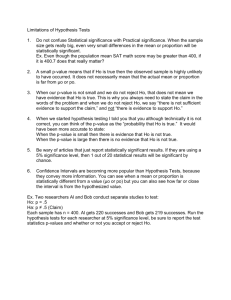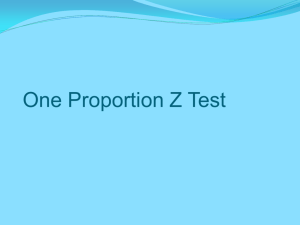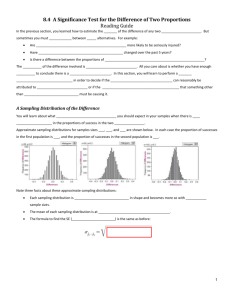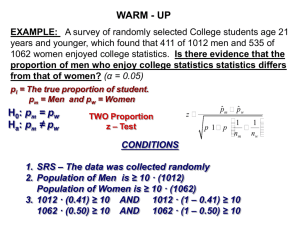Mathematical indirect proof: assume the opposite of the conclusion
advertisement
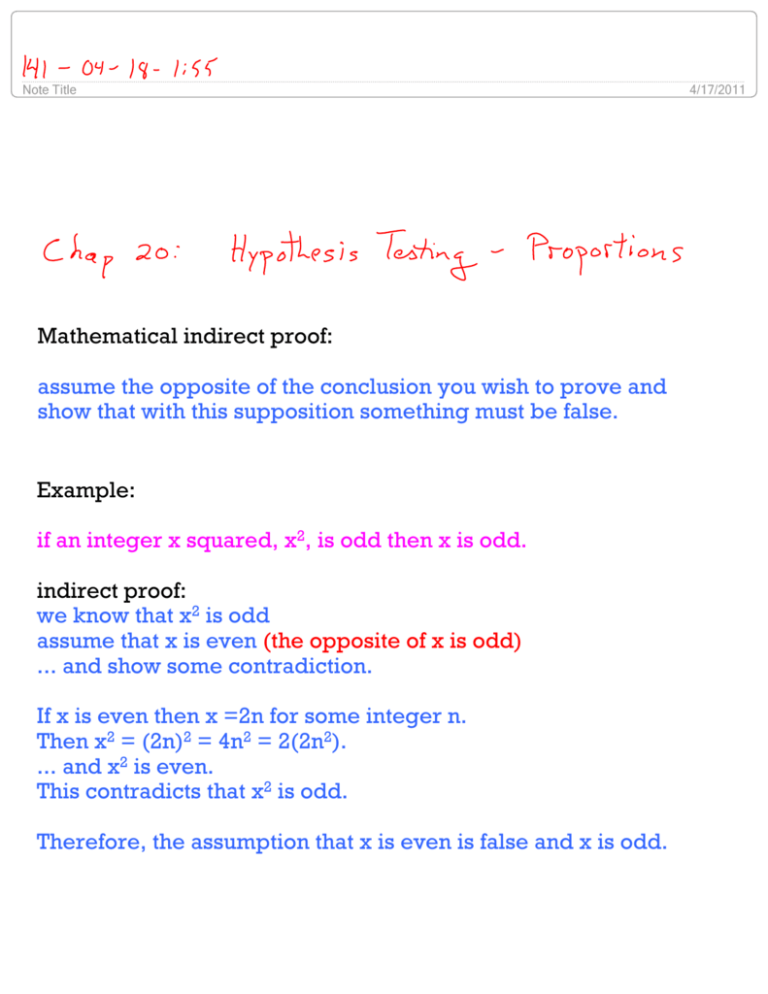
Mathematical indirect proof: assume the opposite of the conclusion you wish to prove and show that with this supposition something must be false. Example: if an integer x squared, x2, is odd then x is odd. indirect proof: we know that x2 is odd assume that x is even (the opposite of x is odd) ... and show some contradiction. If x is even then x =2n for some integer n. Then x2 = (2n)2 = 4n2 = 2(2n2). ... and x2 is even. This contradicts that x2 is odd. Therefore, the assumption that x is even is false and x is odd. Hypothesis (definition): a supposition; something not proved, but assumed for the purpose of argument; a proposition or principle which is taken for granted, in order to draw a conclusion or inference for proof of the point in question; Jurisprudence in the U.S. We assume a defendant is innocent. We must provide enough evidence to show the opposite. "enough": beyond a reasonable doubt O.J. Simpson criminal trial by the preponderance of the evidence O.J. Simpson civil trial criminal trial: civil trial: "not guilty" "guilty" no one said "innocent" "not guilty": The jury has not found the evidence strong enough to reject the defendant's presumption of innocence. The jury says "not guilty" and they do not say "innocent." Back to Statistics, an example for this chapter. page 513 A large city's Department of Motor Vehicles claimed that 80% of candidates pass driving tests, but a newpaper reporter's survey of 90 randomly selected local teens who had taken the test found only 61 who passed. Question: Does this finding suggest that the passing rate for teenagers is lower than the DMV reported? Population: all people who take driving tests. Sample: the sampled teenagers who took the driving test Proportion: the percent who pass the driving test p for the population p-hat for the sample We shall assume that the passing rate for teenagers is the same as the DMV's overall rate of 80%, unless there is strong evidence that it is lower. The null hypothesis H0 : p = 0.80 The alternative hypothesis HA : p < 0.80 Can we use a Normal model for calculating: 0) independence a) random sample b) 10% rule c) np and nq >= 10 YES, check them out. The P-value is the probability that any sample's proportion is 61/90 (or worse). Let's calculate, using Normal model: Pr( p-hat < 61/90) = Pr( ) convert to z-scores... 0.002 CONCLUSION (text page 515) Because the P-value of 0.002 is very low, I reject the null hypothesis. These survey data provide strong evidence that the passing rate for teenagers taking the driving test is lower than 80%. If the passing rate for teenage driving candidates were actually 80%, we'd expect to see success rates this low in only about 1 in 500 samples (0.2%). This seems quite unlikely, casting doubt that the DMV's stated success rate applies to teens. Second example for this chapter. page 516 Advances in medical care such as prenatal ultrasound examination now make it possible to determine a clild's sex early in a pregnancy. There is a fear that in some cultures some parents may use this technology to select the sex of their children. A study from Punab, India ... reports that, in 1993, in one hospital 56.9% of the 550 live births that year were boys. It is a medical fact male babies are slightly more common than female babies. The study's authors report a baseline for this region of 51.7% male live births. Question: Is there evidence that the proportion of male births has changed? WARNING: this is a very different situation than the last one. the last example we checked if p-hat was too small. this example we need to check if p-hat is different, not equal. Population: all babies born in that one hospital in India. Sample: the sampled 550 live births that year. Proportion: the percent of babies born who are male p for the population p-hat for the sample We shall assume that the proportion of male births is 51.7% The null hypothesis H0 : p = 0.517 The alternative hypothesis HA : p <> 0.517, i.e. not equal Can we use a Normal model for calculating: 0) independence a) random sample b) 10% rule c) np and nq >= 10 YES, check them out. The P-value is the probability that any sample's proportion is far from 0.517 in either direction. Let's calculate, using Normal model: P-value = 2*Pr( p-hat > 56.7%) = 2*Pr( ) convert to z-scores... CONCLUSION (text page 518) The P-value of 0.0146 says that if the true proportion of male babies were still at 51.7% then an observed proportion as different as 56.9% male babies would occur at random only about 15 times in 1000. With a P-value this small, I reject H0. This is strong evidence that the birth ratio of boys to girls is not equal to its natural level. It appears that the proportion of boys may have increased.

